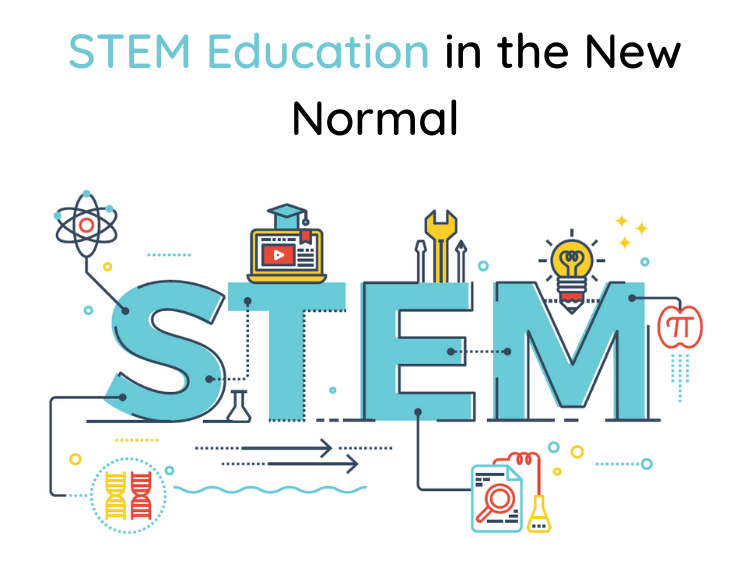STEM Education in the New Normal: A Hybrid Model of Technical Education

#STEM education which primarily revolves around ‘Science, Technology, Engineering and Mathematics’ has become highly sought after by learners all across. Right from primary classes, STEM resources are being used by students and teachers to lay a solid foundation for one’s professional life. While STEM education during primary and secondary classes is being taken care of at the school level, there are some gaps when it comes to higher education in the field. STEM jobs are seeing a constant increase, whereas, the supply of quality education is lagging behind. According to a study, between 2017 and 2027, the number of STEM jobs will grow 13 percent, compared to 9 percent for non-STEM jobs.
One of the major reasons why STEM education at the college level is not as pronounced as it should be is the lack of experts to lead the way. With only a handful of STEM experts willing to devote their lives to educating the budding minds, there is a lack of individuals who can teach these courses effectively. At the same time, due to a gap in the right human resources and the accompanying costs of technical education, many students find themselves unable to afford STEM education in a conventional classroom setting. This has led to a new opportunity of exploring alternative models of disseminating STEM education.
Pandemic of 2020: The Much Needed Push
The need to explore new models to promote STEM education has been doing the rounds for a long time. However, apprehensions about the effectiveness and success of alternative models beyond the brick and mortar classroom learning has been retarding the pace. The pandemic of 2020 changed this situation considerably. With strict mobility restrictions, STEM education moved online, amidst considerable worry. While initially students and faculty took time to adjust to this new form of learning, it has been a smooth sail just a few months in.
Invariably, this clearly indicates that the online mode of dissemination for STEM education is a viable and effective alternative. It has the ability to address the dual challenges of quality STEM education and facilitate numerous students to acquire the right skills and secure high paying jobs.
Hybrid Model of STEM Education: The Benefits
There’s no denying that a conventional approach to STEM education which focuses on hands-on learning and tinkering is very effective. Nevertheless, recent studies have shown that an online learning model of STEM education is almost as effective as conventional formats. If one uses the right tools and digital resources, collaboration on projects, practical learning, critical thinking, etc. can all be made part of such high engaging sessions on STEM. A hybrid model of STEM education which merges online and offline learning has a lot of potential, including:
Reduced Costs
To begin with, one of the major factors ballooning up with costs for STEM colleges is the infrastructure. With online STEM learning, institutions have to spend less on infrastructure and more on developing the right curriculum, which is mostly a one-time startup cost. Additionally, there is a limit to the number of students or learners a physical classroom can cover, limiting the return of investment. However, when it comes to a hybrid model of technical education, there is no limit as such as to how many students a course can cover. Since learning happens online, a higher number of students can be covered. Therefore, the cost per student decreases considerably for the faculty and other resources. This makes STEM education more affordable and within the reach of many.
Access to Experts
If you look closely, most experts in STEM are practitioners and only a handful choose to be a part of academia. Therefore, having full time experts as faculty has limited scope which eventually limits the number of students that can pursue STEM education. However, in a hybrid model, institutions or organizations that offer STEM courses can definitely engage industry experts to take sessions or topics with students without the need to be physically tied down to the academic world. They can take floating sessions while pursuing their STEM practice. At the same time, a hybrid model of technical education promotes cross-border learning. This suggests that students can learn from top STEM experts across the globe, without the need to travel or be in person to absorb knowledge.
Larger Reach
Setting up STEM institutions in every part of the world is not feasible, especially at places where the demand is low. However, this leaves students from remote areas unable to access STEM education, especially women who may not have the resources or permissions to move to bigger cities for STEM education. Online STEM learning can bridge this gap and serve a much larger cohort of learners. Additionally, online learning can even reach the remotest of locations as it only needs a device and internet connection. Undoubtedly, gaining expertise in STEM education requires hands-on learning, but the online mode can be an effective first step for students to see if technical education interests them or not. At the same time, since online STEM learning is much cheaper than the conventional courses, parents and students are more likely to explore the same to identify interest areas.
Short Term Professional Courses
STEM education has become a need for most organizations today. Towards this, many organizations are involved in upskilling and reskilling their workforce with the right STEM skills. However, a conventional classroom course seldom works for working professionals with a full time job. Fortunately, as STEM resources moved online in the wake of the pandemic, more professionals looking to expand their skill set can leverage them. This has benefits for both the organizations and professionals. On the one hand, organizations are seamlessly able to integrate STEM learning for their workforce without having to lose out on productivity with off days for classroom learning. On the other hand, professionals across all levels are able to scale up their skills and augment their knowledge and offerings for career advancement.
Road Ahead in the New Normal
Undoubtedly, the mobility restrictions are lifting across the world with in-person STEM education gaining back its momentum. However, it is safe to say that the success of online STEM education has made a clear case for adopting a hybrid model. It has also facilitated the entry of many new players and stakeholders in the market, with different types of offerings for students and lifelong learners of STEM. For instance, many edtech and online learning platforms have seen rapid growth as a means to help STEM students with their queries and offer different forms of academic assistance they need. To conclude, while the pandemic has negatively impacted many aspects of human life in 2020, it has also opened up numerous opportunities for everyone to reinvent, pivot and close the demand gap. For STEM education, this has been a move towards embracing online mode of learning to reduce costs, drive greater reach and access and ultimately create a large impact.












Responses